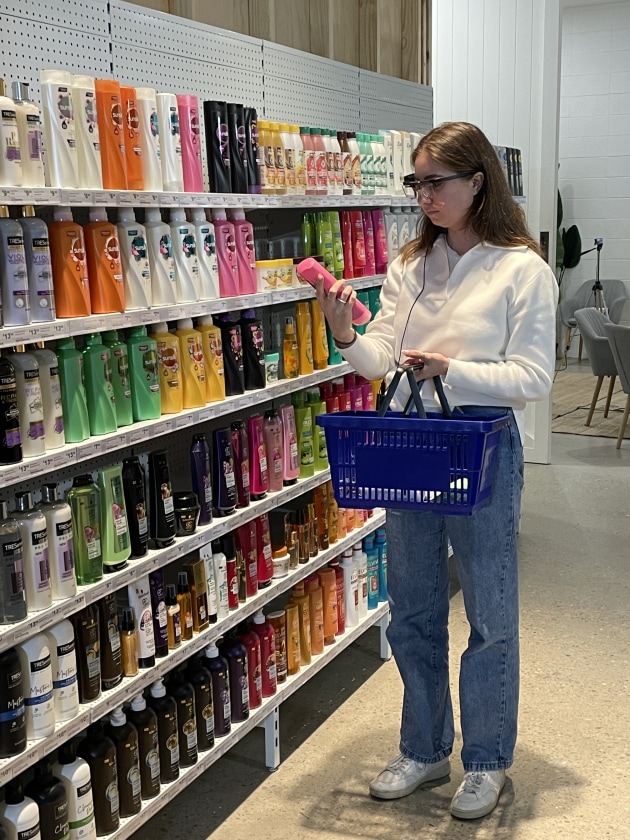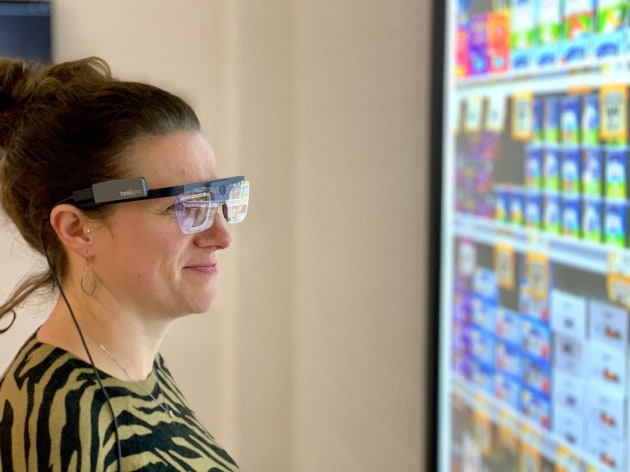Eyes might be the window to the soul, but they’re definitely French windows into the minds of shoppers. That’s what makes eye-tracking such a revealing and valuable tool in packaging design. Not only are you seeing into the minds of your shopper, but also you can uncover things that no one knew before, even the shopper themselves. Those insights come when you combine eye-tracking with qualitative research. Becky Mead, MD of PLAY, takes a look.
Eye tracking delivers a serious return on a serious investment, but only if you set the research up correctly. That comes from understanding what eye tracking can deliver so that you set yourself up to collect the right data to answer the questions you should be asking. It’s very easy to collect eye tracking data that doesn’t tell you what you think it does or that can’t answer the right questions.
First, you need to know when you should be using eye tracking. And there are four answers.
1. Get the real story
Eye tracking is for when you want to be sure you have the real story of shopper behaviour. This is because you can’t rely on talking to shoppers when you want the real story behind their buying decisions.

Half the time (most of the time?) humans have no idea how they’re actually doing something. Shopping is no different. In fact, it’s probably truer — how laser-focussed are you when you’re shopping?
As a result, you can interview shoppers, but shoppers are what your English teacher would call unreliable narrators. You can ask all the right questions and shoppers will answer honestly, but honest and accurate aren’t the same thing. Shoppers often think one thing caught their eye, but only eye-tracking can tell you for sure. Frequently, what caught a shopper’s eye is not what they thought caught their eye.
This is where eye tracking and qualitative (qual) questioning pair like steak and Shiraz. Armed with your data from the eye tracking, you can remind the shopper of what they looked at and ask them to narrate what was on their mind. This way, the shopper can tell you why something caught their eye and what it made them think or do. The data tells you the shopper spent longer looking at the new packaging, but only the qual can tell you that they didn’t buy it because:
they didn’t understand it;
they didn’t believe the claims; or
they wanted to go home to research a claim before deciding if they’d buy it next time
By pairing eye tracking with qual, you get richer and more accurate information that you can use to make well-informed decisions because you have the full story.
2. To get down to micro behaviour
It matters whether a shopper took longer to find a new pack design or spent longer looking at it. That means it’s information you definitely want. However, that information is often measured in milliseconds. Measuring milliseconds takes a computer.
3. To understand category shopping
When it comes to your category, do shoppers shop up and down or along the middle of the shelving? And what does that mean for maximising revenue?
4. To understand signage
Floor stickers, fins, shelf signs, overhead signs and other pointers are there for a reason. They each cost money and they each come with an opportunity cost. That makes it important to understand what catches the shopper’s eye and what does the job.
When you know that, you can double down on what works and stop wasting effort on what doesn’t.
Interpreting eye-tracking data correctly
Your investment in eye tracking can only pay off if you use the data to the fullest extent possible. That means you have to interpret eye tracking data expertly.

Interpreting eye-tracking data starts before you even have any data. That’s because you’ll get the most value from eye-tracking research when you decide in advance what you’re trying to find out. If you lack clarity on the objective, you could finish the research with a heatmap, a gaze plot or some other output that looks like insight but that doesn’t tell you anything useful.
You don’t want to be making six – or seven-figure decisions based on the most interesting number that emerges in the wrong data. Deciding in advance what data will enable you to make the decisions you need to make will ensure you get the return on your investment.
This is something to work on with your researchers so we:
know exactly what we’re testing; and
present the information in a way that makes the right decision easier to make
Importantly, you don’t need to have all the answers when briefing an agency. You need an agency that you trust to work with you to understand your goals and your landscape. Then we can talk to you about designing the right study.
Case study: Shelf signage
One of PLAY’s clients is a leading personal care manufacturer that was working with a major Australian retailer to grow a category by redesigning shelf signage.
The manufacturer’s new shelf fins and shelf strips were intended to trade shoppers up to more premium products, increasing the value of the category.
Shoppers were given an exercise to complete, wearing eye tracking glasses. Afterwards, they were asked to explain their behaviour and thought processes.
The results showed that shoppers had noticed and acted on the new signage. This gave the manufacturer a data-backed argument to make to the retailer that the new signage would increase the value of the category to the retailer.
How eye tracking works: In a typical eye tracking study, participants wear a special pair of glasses during a normal trip to a shop. The glasses are calibrated to track the shopper’s eye movements precisely. Researchers at a nearby laptop watch a live feed from the front-facing camera on the glasses. A dot superimposed onto the video shows researchers what the shopper is looking at. Afterwards, researchers can play the video back to the shopper as a memory aid while the shopper narrates their behaviour.
This article originally appeared on page 40-41 of the PKN Packaging News Jan-Feb 2024 magazine.





